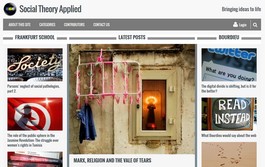Queer desire’s orientations and learning in higher education fine art
Abstract
This paper explores the mechanisms of LGBTQI+ desire that intersect with fine art disciplinary learning. Sara Ahmed's Queer Phenomenology provides a theoretical scaffold for this work, particularly her reflection that orientations involve different ways of registering the proximity of objects and others. In so doing, sexual orientations might shape not just how we inhabit space, but how we apprehend this world of shared inhabitance (Ahmed, 2006, 3). I posit that the desires which determine self-placing within the LGBTQI+ rubric orient learning towards and/or away from disciplinary objects of engagement. They effect this through: accentuated tensions between two colliding aspects of a students' singularity (firstly, sexuality-centred states of being in which productive erotic desires reside and secondly, an individual student's creative will); sense making of the related desires; and the interaction of all of this with dominant disciplinary cultural manifestations in creative visual arts higher education. To investigate this premise, the work of queer/queering visual artists is introduced to the higher educational student learning research canon as a valuable source of understanding of what it means 'to be' in sexual orientation. In light of the work of queer artists, the discussion recognizes that tactics used by queer student artists and the cultural registers that they access and create can usefully be identified as a queer anatomy of agency that deserves fuller investigation. Specifically, it demonstrates how an analysis of queer artists' work offers a unique way of interrogating LGBTQI+ student learning experiences in fine art.
Keywords
Full Text:
HTML PDFShare this article
Viewing Statistics
- Abstract - 1572
- HTML - 1500
- PDF - 983
ISSN: ISSN 2398-5836
Copyright (c) 2018 Vicky Gunn

